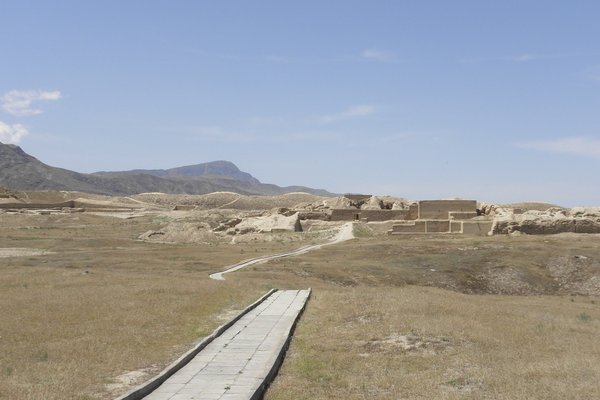Turkmenistan
Nisa
The Parthian Fortresses of Nisa are the remnants of the capital of the Parthian Empire.
The Parthians were a major power in the Near East from the mid 3rd century BCE to 224 CE, and an arch-enemy of the Roman Empire on its eastern borders. From Nisa, they created a huge empire that stretched from the Indus to the Euphrates. The site consists of the two tells of Old Nisa (the royal citadel) and New Nisa (the ancient town).
Community Perspective: Old Nisa consists of partially excavated mud brick walls, and the remains of New Nisa are even less spectacular. A visit to the National Museum in Ashgabat is essential to understand the importance of this site. Solivagant also provides a bit more background on the Parthians.
Site Info
Official Information
- Full Name
- The Parthian Fortresses of Nisa (ID: 1242)
- Country
- Turkmenistan
- Status
-
Inscribed 2007
Site history
History of Nisa
- 2007: Inscribed
- Inscribed
- 1990: Referred
- Info on boundaries etc
- Type
- Cultural
- Criteria
- ii
- iii
Links
- UNESCO
- whc.unesco.org
- Related
-
- livius.org — Parthia - by Livius, Articles on Ancient History
- turkmenistan.orexca.com — Old and New Nisa
- centroscavitorino.it — Excavations at Nisa
All Links
UNESCO.org
- whc.unesco.org — whc.unesco.org/
Related Resources
- livius.org — Parthia - by Livius, Articles on Ancient History
- turkmenistan.orexca.com — Old and New Nisa
- centroscavitorino.it — Excavations at Nisa
- en.wikipedia.org — Wiki on Parthia
News Article
- July 7, 2007 rferl.org — Turkmenistan: Ancient City Nisa Added To UN's Cultural Heritage List
- June 30, 2007 turkmenistan.ru — The UNESCO world heritage committee added on Thursday the Old Nisa site of ancient settlement to the United Nations world heritage list.
Community Information
- Community Category
- Archaeological site: Near Eastern
Travel Information
Recent Connections
-
Silk Roads
Classic Land Route; "along what some ce… -
Ten years or more to inscribe
1990-2007 -
Excavated by Centro Scavi Torino
Connections of Nisa
- History
-
-
Neolithic age
New Nisa - Neu-Nisa war der erste Ort, an dem die neolithische Dschejtun-Kultur nachgewiesen wurde. (Wiki) -
Silk Roads
Classic Land Route; "along what some centuries later became part of the Silk Roads network" (AB ev), "From Nisa, the Parthians controlled the Silk Roads and oasis settlements and trading centers like the harsh desert cities of Merv and Serakhs." (Silk Roads Programme) -
Located in a Former Capital
Parthian Empire -
Parthian Empire
"Nisa, the capital of the Parthian Empire, is the outstanding symbol of the significance of this imperial power." (OUV crit iii)
-
- Damaged
-
-
Destroyed or damaged by Earthquake
Nisa was totally destroyed by an earthquake, which occurred during the first decade BC.
-
- World Heritage Process
-
-
Ten years or more to inscribe
1990-2007
-
- Religion and Belief
-
-
Mithraism
Nisa Was called "Mithradatkert". Among its kings were Mithradates I and II (= "Given by Mithra"). Mithraic mausoleums and shrines have been uncovered
-
- Human Activity
-
-
Ongoing Archaeological digs
University of Turin. Reports up to 2009.See www.parthia.com
-
- Constructions
-
-
Necropolises
Reputedly the royal necropolis of the Parthian kings (wiki) -
Mausolea
One of the rooms in the central complex is assumed to have been the masoleum of Mithridates. -
Tell
-
- WHS on Other Lists
-
-
World Monuments Watch (past)
Old Nisa, Bagir Settlement (2004)
-
- Timeline
-
-
Built in the 3rd century BC
"... the mid 3rd century BCE, when impressive buildings were erected by the Parthians" (AB ev)
-
- Science and Technology
News
- rferl.org 07/07/2007
- Turkmenistan: Ancient City Nisa Ad…
- turkmenistan.ru 06/30/2007
- The UNESCO world heritage committe…
Recent Visitors
Visitors of Nisa
- Adrian Turtschi
- Alexander Barabanov
- Ali Zingstra
- Ana
- Artur Anuszewski
- Atila Ege
- bergecn
- Bram de Bruin
- Cheryl
- Cirene Moraes
- Clyde
- David Marton
- Els Slots
- Erik Jelinek
- Eva Kisgyorgy
- Fmaiolo@yahoo.com
- Gernot
- Harald T.
- henryjiao18
- Iain Jackson
- Ivan Rucek
- Jean Lecaillon
- jonas
- KarenBMoore
- Kevin Padley-Knight
- Knut
- Loic Pedras
- Ludvan
- Luis Filipe Gaspar
- Maciej Gil
- Marcobrey
- Martin
- Martina Rúčková
- Michael Novins
- Mihai Dascalu
- Mikko
- Milan Jirasek
- MMM
- Philipp Leu
- Piotr Wasil
- Roman Bruehwiler
- Solivagant
- Szucs Tamas
- Thomas Buechler
- Timothy C Easton
- Tinamu
- Toxicologist
- Vanessa Buechler
- Westwards
- Wojciech Fedoruk
- Zoë Sheng
Community Reviews
Show full reviews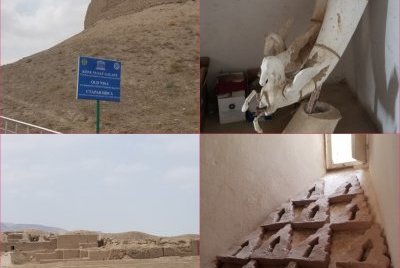
Like most people say: you need to visit the National Museum in Ashgabat beforehand to understand most of what went on in Nisa or why it is important. In fact almost all artifacts are IN the national museum. What's worse is that there some columns and walls underneath the rubble in Nisa because they want them to stay hidden and protected - fair enough but not cool for you visiting at all.
The guide told me that as a kid he would just come up and play ball here. Well, basically these days it's locked up but one could still go in and destroy but there is nothing here. The columns underneath the dirt aren't interested to most folk although I would find it more interesting that seeing small mounts of dirt. After a long approach you can finally waltz around a few walls remaining but it's not so special. There are some areas where you can see the old wall, even the old columns, and I don't know if everyone gets to see the inside of one of these buildings but it was definitely the highlight of my trip. Some things inside are replicas but there are indeed ancient remains. You can get closer than in the museum and people coming to Nisa as visitors aren't going to destroy these - I think. By the way if you didn't come with a guide (which isn't possible I feel) then you'd see nothing and go back very disappointed.
…
Keep reading 0 comments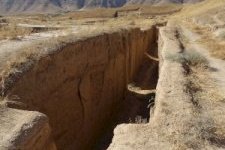
I feebly rated this site as the other members of the Community because it remains almost nothing of this old city. It looks like trenches of the WWI in a dry area...It's comparable to susa in Iran.
However, these are the ruins of one of the first capital of the Parthian Empire.
But it's an easy WHS to do thanks to its proximity of the crazy capital of Turkmenistan. So do it :)
Keep reading 0 comments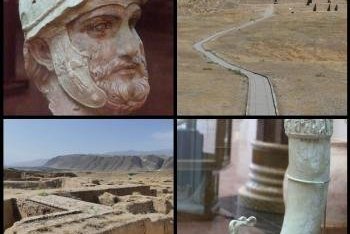
I visited this WHS in June 2017. Having read the previous reviews I didn't have high expectations. I agree that a visit to the National Museum in Ashgabat is essential to understand the importance of this Partian site and it is relatively easy to combine such a visit as the site of Nisa is very close to modern Ashgabat.
The view from the platform next to the entrance (top right photo) is the most 'iconic' view you'll get even though the view from on top of the partially excavated mud brick walls with the surrounding mountain landscape is not bad either (bottom left photo). Like in the Ancient Merv archaeological site, while walking through the maze of mud brick walls and pillar remains, it's easy to observe the now exposed repellent materials used during the site's construction against insects (mostly termites and wasps) and birds.
Same as in Merv and Gonur Tepe, there are several old clay fragments still scattered everywhere on the floor. There's a small room where a few important remains and fragments from the building's coloured friezes could be seen but it's more of a storage room raher than a visitor centre proper. The most important artefacts can be seen in the National Museum in Ashgabat. The highlights were the dozens of beautiful ivory rhytons (bottom right photo) and the head of a clay statue with traces of colour painting (top left photo).
More coloured paintings are still buried under the mud and have not been excavated …
Keep reading 0 comments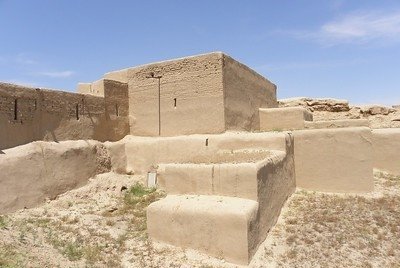
Although Nisa is situated quite close to the Turkmen capital Ashgabat, it took the best part of the day to get there. The group first had to visit the Türkmenbashi mausoleum next to the biggest mosque in Central Asia, the second biggest mosque in Central Asia (built by Mr. T. after a visit to Mecca), the ancient battlefield of Geok Tepe and a horse farm. Without lunch, we ended up at the gate of Old Nisa around 13.30 - the only excursion of the day that I had looked forward to.
The best preparation for this visit I already had experienced the day before, when I went to the National Museum in Ashgabat. This is a very worthwhile museum in general, quite modern and with displays in English. Exhibits from Merv and Nisa feature prominently. The iconic representations of the Parthian culture from Nisa are its ivory rhytons: drink containers the size of an elephant's tusk. The museum holds a fair number of them, all with fine decorations.
The archeological site of Old Nisa itself is a rather small complex. It is strategically positioned with its back to the mountains, overlooking a flat valley. Walls and columns are mainly reconstructed, the only original parts are the outline (labyrinth-like) and some pieces half-hidden underground. A good overview of the site can be had from the viewing platform at the entrance, said to have been built for a visit by former French president Mitterand. It's not a spectacular site to …
Keep reading 0 comments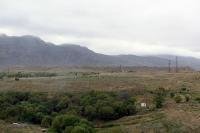
We visited Nisa in Oct 2004. We didn’t expect to see much and, in all honesty, there is not a great deal to see (at least for the non-specialist), but the desire to extend my “visited list” of “Capitals of Ancient Civilisations” demanded an excursion there whilst we were in Turkmenistan!
I knew (and still know) relatively little about the Parthians – they are one of a plethora of ancient West and Central Asian empires together with Scythians, Sogdians, Hittites, Medes, Assyrians etc whose exact relationship to each other in terms of timescale and geography is somewhat muddling to the uninitiated! The Parthians originated as nomads from east of the Caspian and developed an empire centred approximately on modern day Iran but extending to most of the surrounding countries as well. They were generally contemporaneous with the Romans who, as enemies (their mutual “frontier” was in Mesopotamia and Hatra in Iraq is another WHS which was, for a time, part of the Parthian Empire), gave them a very “bad press”, but had the advantage of Latin to spread this view whereas the Parthians left very little literature! Today they are most “famous” as the originators of the “Parthian shot”. Their empire was a confederation of kingdoms and Nisa was a major city of at least one of these. One of the buildings in Old Nisa may (or may not!) be a palace but whether the city was ever a “capital” of the empire itself is less clear. A visit to …
Keep reading 0 comments
